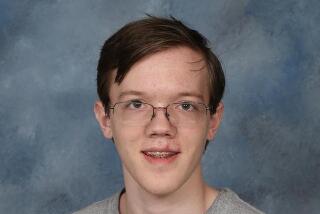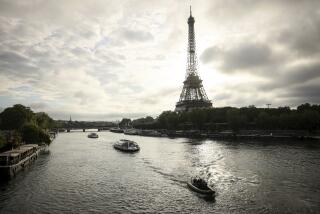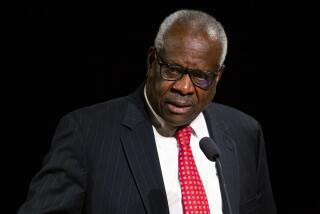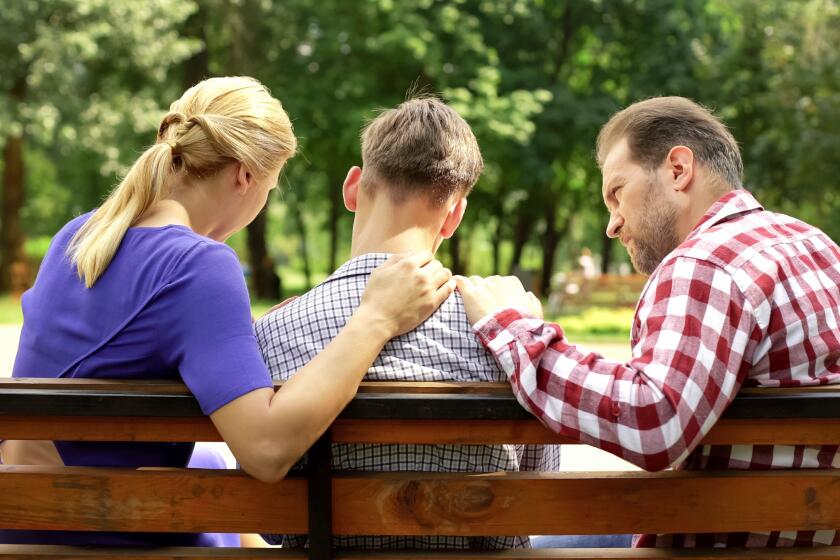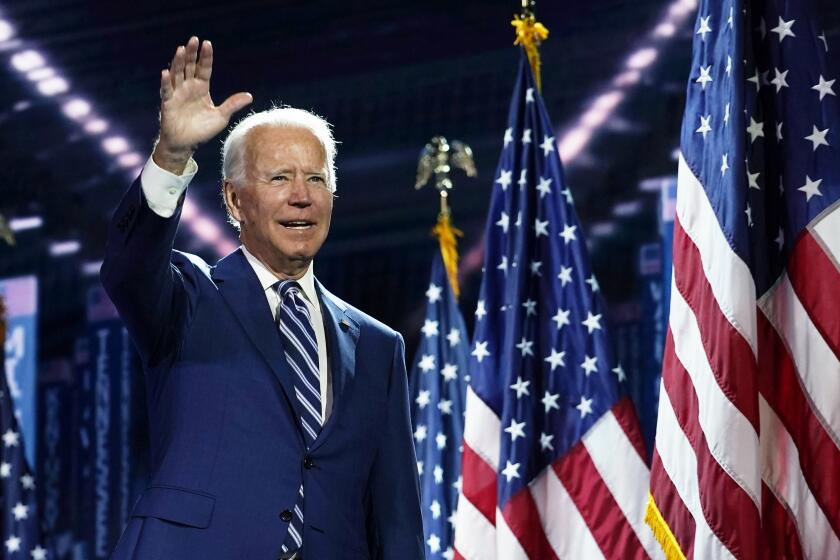Making Hanukkah a Major Holiday
With the lighting of menorah candles, Jews on Friday heralded the beginning of Hanukkah, a once comparatively minor observance that has become a major celebration of Jewish distinctiveness in the American cultural mainstream.
In the last few decades, Hanukkah in America has become a principal holiday for many Jews and one of the most popular. The manner in which the holiday is observed -- greeting cards, extensive gift giving, even complaints about over-commercialization -- represents an accommodation to the mainstream culture.
But the holiday observances also help to draw important distinctions, rabbis and other students of Jewish culture and religion say.
“What was a very simple, humble kind of observance of a minor holiday in the home is now one of the most popular American Jewish holidays and has exceeded in importance some major festivals,” said Rabbi David Baron of Temple Shalom for the Arts in Beverly Hills.
But with the assertion of Jewish traditions also comes a confidence among Jews that they are part of the mainstream, Baron said. “It reflects a comfort level and pride in our heritage.”
That mixture of assimilation and self-confidence is part of what it means to be a minority religious group in America’s overwhelmingly Christian culture, said Rabbi Bradley Shavit Artson, president of the Ziegler School of Rabbinic Studies at the University of Judaism in Los Angeles.
“While it’s true that Hanukkah used to be a minor holiday, there’s a need for a major Jewish celebration and it fits the bill. In December, it’s very difficult to be Jewish in America” because of the omnipresence of Christmas symbols, Artson said.
“This is the time when we feel most outside, so we need an affirmation of who we are and an affirmation of who we are that fits with the core values of the best of America,” Artson added.
One possible indication of self-confidence is that some synagogue congregations feel comfortable holding joint services with churches to celebrate the two holidays. On Dec. 14, for example, St. Jude’s Episcopal Church in Burbank will join with Temple Beth Emet in an observance called “A Season of Light -- A Season of Miracles.” Christmas and Hanukkah music will be performed.
On the eighth day of Hanukkah, the West Angeles Cathedral, a predominantly African American congregation led by Bishop Charles E. Blake of the Church of God in Christ, will host congregants at Temple Shalom for a joint service and fellowship. The program will feature the singing of the Christian hymn “Amazing Grace” and the lighting of menorah candles.
But Blake and Baron, along with others, emphasized this week that they are sharing each other’s culture and traditions, not forswearing their own beliefs and heritage. Jewish and Christian authorities are quick to note the differences.
Christmas marks the birth of Jesus, whom Christians consider the son of God and savior of the world.
The eight-day Hanukkah observance, sometimes called the “Festival of Lights,” commemorates the victory of a Jewish revolt about 150 years before Jesus’ time against the Syrian Greeks who controlled Palestine at the time.
The revolt, led by a group of zealous Jews known as the Maccabees, led to the reestablishment of Jewish control over Jerusalem and its surroundings and the purification and rededication of the Temple, in which the Greeks had carried out pagan rituals.
According to tradition, when Judah, who led the Maccabees to victory, sought to re-light the Temple’s lamps, there was enough pure olive oil for only one day. Yet through a miracle the lamps burned eight days. To commemorate that, Jews light candles for eight days.
In America, the holiday has been transformed by a combination of circumstances and events, including cultural assimilation, that undoubtedly would have shocked the Maccabees, said David Halperin, who has taught Jewish history at the University of North Carolina.
In part, Hanukkah has prospered as a holiday because its story, the candle-lighting ritual and the relative lack of liturgy make it attractive to children.
“When I was a kid, if you asked me which holiday loomed larger in my awareness and in my understanding, Hanukkah or Yom Kippur, it would be Hanukkah hands down,” said Halperin, now 55, who grew up in a Conservative Jewish home.
“Hanukkah was something I looked forward to.”
“Between getting presents and lighting the candles or standing in an itchy suit in a synagogue for hours on end, there was no competition.”
All that might have disturbed the Maccabees, Halperin notes. Their goal was to combat foreign influences, particularly the Greek culture that many Jews in their day found attractive.
“We’ve got a festival whose explicit message is we’re going to stay separate and that anyone who tries to bring us into line with the culture around us is going to get burned. That’s the story of Hanukkah,” Halperin said.
“Yet the message of its practice is that we are people just like the people around us -- sharing the celebration and sharing the primal pleasure of the return of light at the darkest time of year.”
More to Read
Start your day right
Sign up for Essential California for news, features and recommendations from the L.A. Times and beyond in your inbox six days a week.
You may occasionally receive promotional content from the Los Angeles Times.
